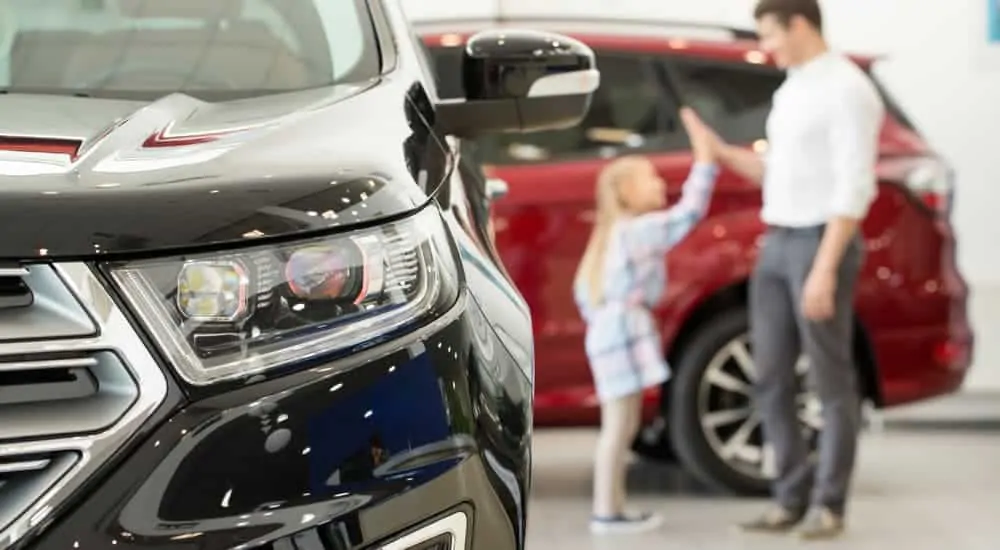Shopping for a car, new or used, is something that a lot of people dread. It’s typically a long process, often involving a lot of uncomfortable conversations, and if you end up with a pushy or unpleasant salesperson, then the whole experience can become a living nightmare. Although there are some things you cannot control when you’re shopping for used cars near you, there are also a lot of factors that you can control and very much should control.
Some of these things are common sense––but even common sense can fall by the wayside when you approach your sixth or seventh hour of trying to buy a used car. And a lot of this stuff is not something that someone else might ever think to teach you, that includes parents, teachers, and pretty much anyone else. No one is born knowing this stuff, so don’t feel bad if some of it surprises you or is something you might not have ever thought of by yourself. That’s why I’m here, after all.
So, keep reading, and make sure you do these things before you buy any used car.
#1 – Research
You’re here, so that’s a good start, but the importance of research really can’t be overstressed. This is something you don’t want to skip before you start shopping for used cars, and especially before making a purchase. Look at lots of different models from lots of different years––pay attention to when new generations started for a model, so you can see what years will have the features you want. Don’t fall in love with a particular model or year, but find as many options as possible that you like and will work for you.

#2 – Make a List
While you’re doing your research, make a list (probably several) about what you want and need in a vehicle. You might think that five or six particular vehicles are best, but then see something else at a used car dealer, and it seems like a good fit. If you have a list of what you need, then you can compare any vehicle you find and know, for sure, that it will or won’t work for you. Checklists throughout every step of the process will make your life easier and take some of the stress off you with all the things you need to remember.
#3 – Know your Budget
Seriously, know what you can afford and stick to it! You need to know not only your monthly budget but what you want to spend overall. Just as importantly, don’t focus too much on only the monthly payments you can make––and don’t tell a salesperson what you want to spend each month. Paying less each month can seem great at first, but it often means you’re paying more in the long-run in interest. Figure out what you can afford each month, but also have a set total in mind to ensure you don’t pay a lot more than you want.
#4 – Shop Around
You have a lot of options available to you when shopping for used cars, including dealerships and private sellers. Don’t just go with a private seller because they are cheapest––consider all of your options and think about where you’ll get the best peace of mind after you drive away. Of course, all that shopping around can seem exhausting, so you’ll want to…
#5 – Use the Internet
You’re reading this online, so obviously, you have already thought of this, but there might be more resources available to you than you realize. Car dealerships have websites with their inventory listed, showing prices and other information that makes it easy to start shopping online. You can contact dealerships in your area through email and even negotiate a price before you ever set foot on their lot.
#6 – Valuate your Trade-in
If you have a trade-in, then don’t just assume a used car dealership will tell you a fair price for it and leave it at that. Use online tools like Edmunds or Kelly Blue Book to figure out what your vehicle is worth––but be honest with yourself about its condition. Just remember, a dealership isn’t going to pay you what they can sell it for––they need to make a profit. You might be able to get more for it by selling it yourself, but that also brings some hassles with it.
#7 – Be Ready for a Test Drive
Whether you are shopping for used cars near you at a dealership or from a private seller, always take that car for a test drive before you consider buying it. Don’t just take it around the block for five minutes and call it a day––this is a big investment, so do the work. Take it on the freeway for a few miles, make left and right turns, and try parking it in a couple of different ways. Look for large blind spots, check your rear visibility while backing up, see how easy it is to get in and out of, etc. Make a list for what you want to check during a test drive––yes we’re making lists again––it can save you a lot of frustration.
#8 – Call Your Insurance Company/Agency
You might think you don’t need to call your insurance company until after you’ve bought a vehicle, but it will actually make your life a lot easier to call them before. Talk to your agent and ask about gap insurance and other issues to make sure you know what you need and have it all figured out. If you’re buying from a used car dealership, then they can’t let you drive away without proof of insurance, so get this all figured out ahead of time.
#9 – Figure Out Financing
Similarly, you might think of financing as something you’ll figure out once you’re at a dealership, but it’s also something to consider well before you get to that point. Know what your credit score is ahead of time and get a sense of what kind of financing you might be able to qualify for. Call your bank or credit union and talk to them––since you’re already a customer, they might offer you a better rate on a loan than any other financer.
Don’t just assume that the financing a dealership offers is necessarily the best. In some cases it may be––if you have poor or little credit, for example, then a dealer rate on a loan could be the best you’ll find. But figure this out ahead of time, so you know where you stand.
#10 – Have a Strategy for Negotiating
Negotiating or “haggling” is something a lot of people are uncomfortable with––it’s not really a skill we teach or expect here in the US. So you’re dealing with a bit of a cultural roadblock that you need to get past. You don’t have to go into a negotiation being a jerk––the idea of “getting more flies with honey” is legitimate, and it’s often best to start off nice and friendly and become more stern if you need to.
Do some research on this, read up on negotiation strategies, and know what vehicles are worth. Don’t just look at a sticker price––look up the value of a vehicle and use that as the baseline for negotiating. Ultimately, it’s your money, and you can always walk away. This is the key to your negotiation: your ability to walk away is your greatest strength. Never give that up, and find a salesperson that treats you with respect.





